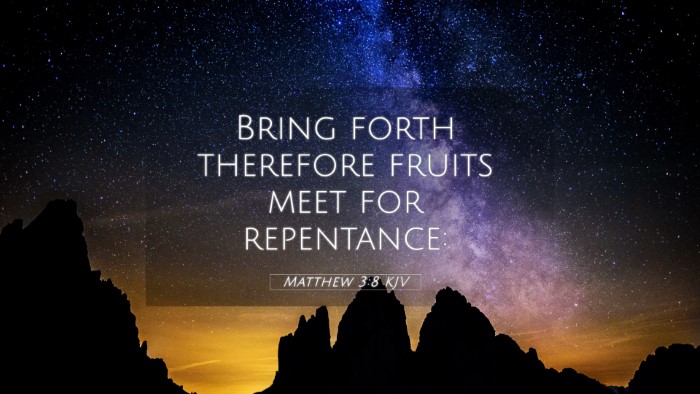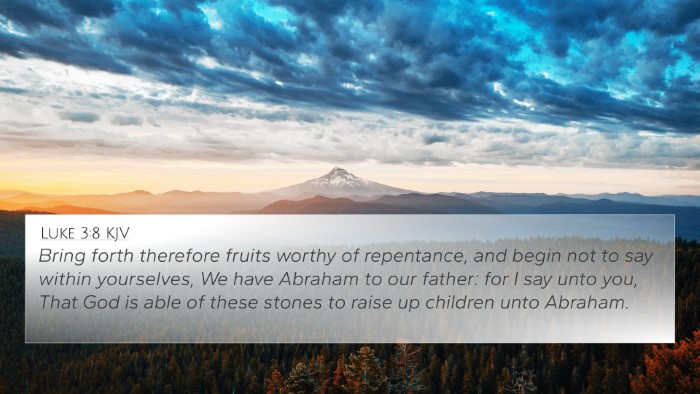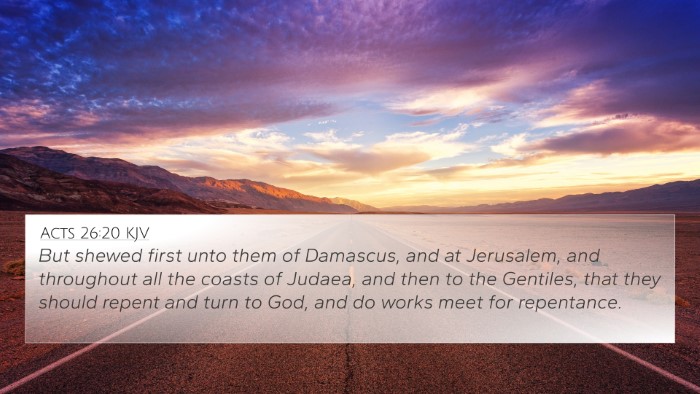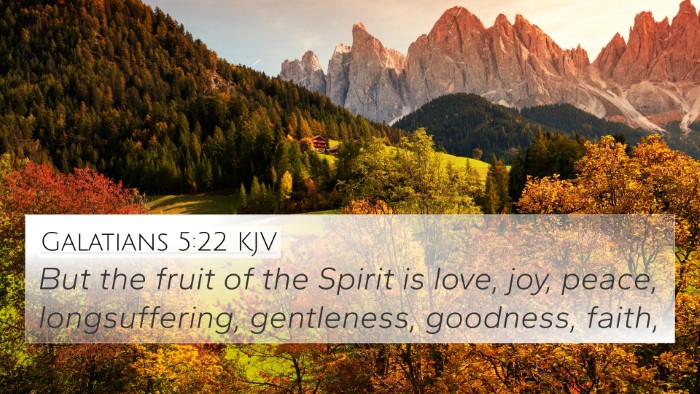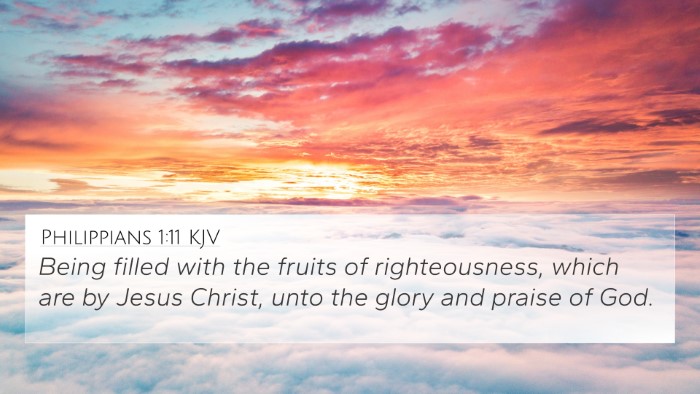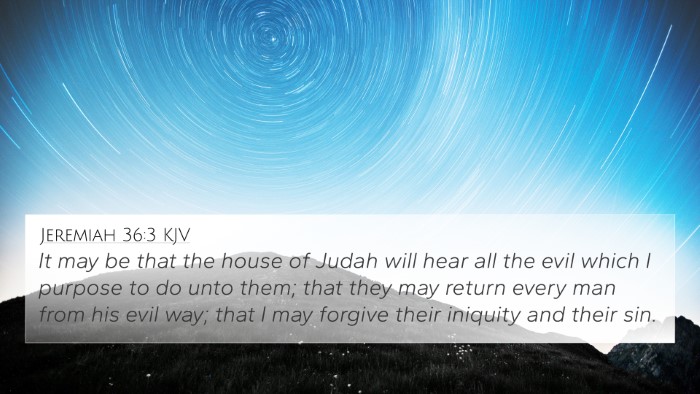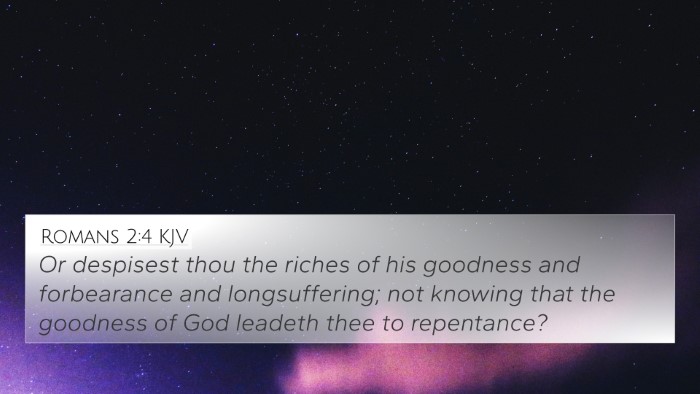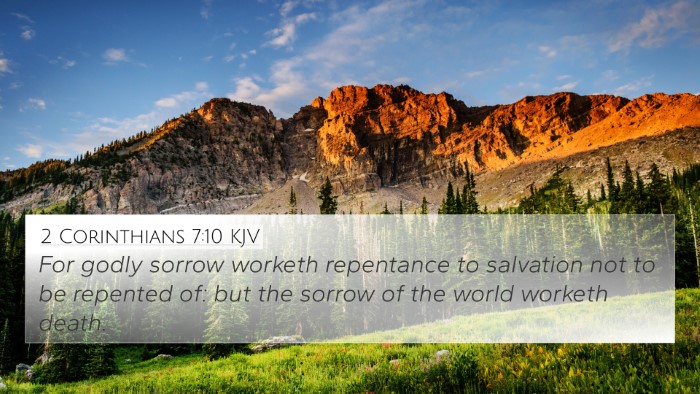Understanding Matthew 3:8
Bible Verse: Matthew 3:8
“Bear fruit worthy of repentance.”
Summary of Matthew 3:8
Matthew 3:8 emphasizes the essential connection between true repentance and the resulting transformation in one’s life. John the Baptist calls for individuals to exhibit tangible evidence of their remorse for sin through their actions. This theme of repentance is pivotal across both the Old and New Testaments and underscores the importance of sincere commitment to God.
Commentary Insights
-
Matthew Henry:
Henry highlights that John the Baptist's message points to a heart changed by repentance that naturally produces good works, akin to fruit on a tree. True repentance is not merely a feeling but a transformative experience that leads to visible manifestations of righteousness.
-
Albert Barnes:
Barnes interprets "bear fruit worthy of repentance" as a call to demonstrate the authenticity of one's repentance through actions that reflect a desire to live righteously. It's important to note that actions must align with the profession of faith.
-
Adam Clarke:
Clarke explains that the phrase implies accountability; those who profess faith must show it through their conduct. The concept of fruitfulness is central to understanding the relationship between faith and works in biblical theology.
Cross-References for Deeper Insight
Understanding the themes in Matthew 3:8 can be deepened by exploring these related Bible verses:
- Luke 3:8: “Bear fruits in keeping with repentance.”
- James 2:17: “Faith by itself, if it does not have works, is dead.”
- Galatians 5:22-23: Lists the fruits of the Spirit.
- Romans 2:6-8: Discusses how people will be judged according to their deeds.
- Matthew 7:17: “So every healthy tree bears good fruit, but the diseased tree bears bad fruit.”
- Philippians 1:11: “Filled with the fruit of righteousness that comes through Jesus Christ.”
- Colossians 1:10: “So as to walk in a manner worthy of the Lord, fully pleasing to him, bearing fruit in every good work.”
Connections Between Bible Verses
The verse in Matthew 3:8 serves as a foundation for understanding the broader theme of repentance throughout Scripture. The call to “bear fruit” in this context resonates with other biblical teachings about the importance of actions that reflect one's faith:
-
Luke 13:6-9:
The parable of the barren fig tree illustrates God's patience and the expectation for fruitfulness from His people.
-
2 Corinthians 5:17:
“Therefore, if anyone is in Christ, he is a new creation. The old has passed away; behold, the new has come.” This reiterates the transformative aspect of repentance.
-
1 Peter 2:9:
“But you are a chosen race, a royal priesthood, a holy nation, a people for his own possession, that you may proclaim the excellencies of him who called you out of darkness into his marvelous light.” This emphasizes a new identity that ought to manifest in good works.
Thematic Bible Verse Connections
The themes of repentance and fruitfulness link to various aspects of Christian life and theology. Key thematic connections include the interplay of faith and works, the anticipation of judgment, and God's call for holiness:
-
Theology of Repentance:
Repentance is not merely sorrow for sin, but a commitment to turn from sin toward God, reflecting a transformative acceptance of His grace.
-
Expectation of Judgment:
The call to produce fruit serves as a reminder of the coming judgment where believers will be assessed according to their lived faith.
-
Spiritual Growth:
Fruitfulness in a Christian’s life signifies growth in holiness and obedience to God's Word.
Conclusion
In summary, Matthew 3:8 encapsulates essential truths regarding repentance and the call for believers to manifest the reality of their faith through their actions. By understanding this verse within the broader biblical narrative and its connections to other scriptures, we gain a deeper appreciation for the fundamental principles that govern the relationship between faith, repentance, and the resulting good works.
Further Study Tools
For those interested in exploring these connections further, consider using the following tools:
- Bible Concordance
- Bible Cross-reference Guide
- Cross-reference Bible Study Materials
- Bible Reference Resources
- Comprehensive Bible Cross-reference Materials

